|
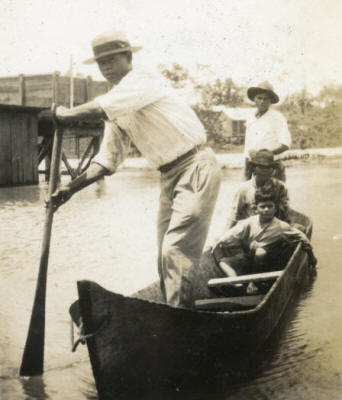 THIS IS THE second PAGE
of documents for the second HALF of 1928
on Nicaragua's Caribbean Coast
region, housing materials dated during the first 17 days of August.
THIS IS THE second PAGE
of documents for the second HALF of 1928
on Nicaragua's Caribbean Coast
region, housing materials dated during the first 17 days of August.
In these documents we see
Capt. Edson's 130-some strong Wanks
Patrol continuing upriver past Bocay
toward Guadalupe Rivera's property
at Santa Cruz (Vigía), and the
capture of Rivera's cousin, the
EDSN-affiliated Abraham Rivera,
along with a cache of papers and
correspondence (Aug. 12; on Rivera's
interrogation in Jinotega and
subsequent release, see the
TOP 100, PAGE 11).
We see the Marine aerial offensive
against the rebel concentration in
Poteca in the northeast Segovias
(Aug. 9), and confusion about the
purpose of the offensive. As Edson
writes to Major Utley on Aug. 10, "I
would like a definition of my
mission." Utley's Aug. 16
"estimate of the situation" offers a
crisp capsule summary of how the
Marines see their options in the
Coco-Bocay zones. Captain
Byron Brown (Ret.)'s account of his
intrepid inspection trek up the
Patuca River & overland to the Coco
& his recommendations for
tigtening Guardia control of the
"Wanks-Patuca-(Guanquibila)-Trail"
offers important details on the
political geography of the deep
interior (Aug 5).
Meanwhile in
Bluefields, Major Sage's Aug. 17
report shows the corruption of the
civil police by the Cuyamel Fruit
Company and its "secret fund" for
bribes and payoffs — an
investigative tack Sage also
follows on the next page in his report on
Nicasio Vargas, former commandante
of civil police in El Bluff (across
the bay from Bluefields) and the
systemic bribery of public officials
by mahogany & fruit companies
(Aug. 20).
Overall, and in comparative terms,
as Las Segovias seethes in
popular resentment against the
Marine invasion & occupation & the
EDSN gains effective dominion over
much of the deep interior, the
Atlantic Coast remains largely
quiescent.
|
|
PERIOD MAPS
|
|
1894 mosquito
shore

27 MB,
library of congress
|
1920s
Standard Fruit

6.5 mb,
US National archives
|
1928 Rio wanks
Patrol

3 mb, us
national archives
|
1931 Moravian

2.4 mb,
coMENus press
|
|

|
2 August 1928
(1152).
Radiogram from Gen. Feland, Managua, to
Major H. H. Utley, Puerto Cabezas.
|
|
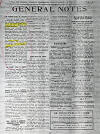
|
4 August 1928.
"The National Guard in Demand,"
The
Bluefields Weekly.
|
|
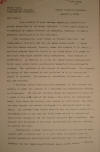
|
5 August
1928.
Report on conditions in Wanks-Patuca
River Area, Capt. Byron C. Brown, Ret.,
Puerto Castilla, to Fred T. Cruse, US
Military Attaché, Tegucigalpa, p. 1.
"Dear Major: ¶
Upon receipt of your message regarding
Sandino’s reported evacuation of the
Bocay district. I left Puerto Castilla
accompanied by Austin Cabourel of
Limoncito, Honduras, to make a personal
investigation of the situation. ¶ Upon
reaching the upper Patuca we crossed
over into the Wanks-Awawas District, via
the old Wanks-Patuca trail. I found that
the Marine outpost, formerly under the
command of Lt. Carroll, had been removed
from the island in the Wanks River to a
point on the right bank eight hundred
yards downstream. This outpost is
ineffective. As situated it leaves the
Wanks-Patuca-(Guanquibila)-trail open,
across which questionable characters are
continually passing. The personnel of
the outpost is insufficient. The
Corporal in charge of this outpost is
not qualified to be in command and
should be replaced. His personnel,
consisting of seven men, are all raw
recruits. ¶ I strongly advise increasing
the personnel of this outpost and
placing it under the command of a
competent non-commissioned officer or
lieutenant. Its present location should
be abandoned in favor of a point on the
left bank of the Wanks River above the
Guanquibila Trail, from which two
Cossack posts should be established, one
above the main outpost and another
stationed at a strategic point on the
Trail. All pitpans (Suma Indian name for
the big dugout canoes, F.C.) proceeding
both up and down the Wanks River should
be stopped and their crews recognized
and the cargoes inspected for
contraband. The Cossack post stationed
on the trail should halt all parties
entering or leaving the zone. ¶
Furthermore I would recommend
establishing an outpost at Guanquibila
with a Cossack post at a point above the
Guampu River to prevent suspicious
characters from penetrating into the
interior of Honduras via the
Guampu-Lagarto-Culmi Trail, which enters
a district . . . "
|
|
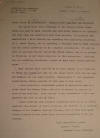
|
5 August
1928.
Report on conditions in Wanks-Patuca
River Area, Capt. Byron C. Brown, Ret.,
Puerto Castilla, to Fred T. Cruse, US
Military Attaché, Tegucigalpa, p. 2.
" . . . where
there is considerable
Liberal-(Red)-sympathy and activity. ¶
The upper trail from Nicaragua to the
Patuca-(Piedra Chata Trail)-is used by
many recruits and over which there is no
question but what arms and ammunition
have been carried. In previous
communications I have advised you
regarding the suspicious activities of
J. Amado Flores, who is operating a
Mahogany Camp in this district, and who
openly professes to be a Sandino
sympathizer. It will be well to add that
Flores’ associate, Frank Romero, who is
at present in Trujillo, is not above
suspicion on this connection. Such men,
who are rendering assistance should be
kept under closer surveillance. ¶ Many
Indians have reported to me that Sandino
is in readiness to cross the border and
will use the upper trail; that his men
number between six and eight hundred.
Consequently I also recommend
establishing strong outposts at both
ends of this trail. ¶ I have personally
established guards at Guanquibila and at
a point above the Guampu River, and will
be advised by runners in case of any
activity. Upon receipt of any
information I will communicate the same
to you by radio. ¶ I have received much
valuable assistance from Mr. W. H.
Scott, American Vice-Consul at Puerto
Castillo, and from Mr. C. E. Rollins,
manager of the Trumillo Railroad
Company, both of whom have shown active
interest in the proceedings and are
cooperating in all instances. ¶ Most
respectfully yours, ¶ Byron C. Brown, ¶
Captain U.S.A. (Retired)"
|
|
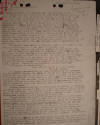
|
1. 5 August
1928.
Letter of Complaint from
F. Spinoza C.,
Leonardo Cajina, José Matamoros Jerez,
Eleazar Meza, Rama, to the Chief of the
Guardia Nacional, p. 1.
"We permit
ourselves to transcribe you the
following note: ¶ ‘Managua, June 7, 1928
General Jose Maria Moncada, Present.
Sir: I have the honor of directing
myself to you to treat a case that is of
great importance for the progress of
Nicaragua. At times crimes are committed
in the country that should always be
punished severely. It is the belief that
in the past, that the committers of
crimes escape from punishment through
political affiliation, and this has
occurred through political influence on
both sides, by this way hoaxing the
justice. You may understand clearly that
such state of things cannot bring order
and prosperity; these things carried to
the extreme, fosters hatred, civil war
and insecurity. I firmly believe that if
the Directors of Political parties use
this influence only to the end of
justice, without favoring those of their
party that commits a fault, the origin
of war would disappear, and by this way
secure a base of unification for
Nicaragua. ¶ The Guardia Nacional is an
instrument put in the hands of the
people of Nicaragua to be well used or
obstaculized. ¶ The view point of the
Guardia Nacional is very noble: they
only want to serve and establish in
Nicaragua, well organized communities.
You will develop a true patriotic work
if you aid the Guardia Nacional, as
Chief of a party. We highly ask you to
cooperate through or with your
partisans, on whom you have influence,
to aid the Guardia in the apprehension
of those that commit crimes, violate the
law and threaten the security of
communities and individuals, without
taking in consideration political
parties. ¶ With sample of consideration
¶ I am your attentive and sure servant,
¶ (f) E. R. Beadle. ¶ The former
communication has been published in the
newspaper ‘DIARIO MODERNO’ Managua No.
#2234 of the 15 June 1928 and it from
where we got the idea to put it to your
high knowledge, as Chief of the Guardia
Nacional in this section, some crimes
that you can investigate through your
commands, those crimes need to be
corrected or punished, because they have
been committed by employees of this
locality, above all these that actually
administrates justice, and to what I
refer below: ¶ Nicanor Obando’s son who
is functioning as Alcalde, is
functioning illegal, from the moment
that he is only an alderman and not
Alcalde or an alternate. The Alcalde
elected is Mr. Moises Medina who is
dead, and the alternate by law Mr.
Benjamin Brenes to whom the seat
corresponds according to the municipal
organic law. ¶ Nicanor Obando was placed
as Alcalde in 1926 by the stationed
armed force that was in Rama and from
then he has retained the function
inconstitutional. The permanency of Mr.
Obando in the Alcalde’s office hoaxes
the law, and the municipal community and
the Guardia is called to avoid, placing
before the municipal’s interests one
that the law grants such rights that is
Mr. Benjamin Brenes alternate. ¶ And
there is something of greater importance
that impedes Mr. Orando to continue
functioning as Alcalde. Orando has
committed some crimes, personally,
public and in a drunken condition and
his condition as Alcalde always saved
him from being punished. These crimes
are: ¶ He cut Mr. Manuel on the face,
under the left eye, with the caliber of
his revolver that he always carry. This
cut has left him a permanent visible
scar. It is a crime that needs more than
correction, and he never was processed,
and is still functioning as authority .
. . "
|
|
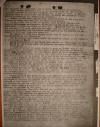
|
2. 5 August
1928.
Letter of Complaint from
F. Spinoza C.,
Leonardo Cajina, José Matamoros Jerez,
Eleazar Meza, Rama, to the Chief of the
Guardia Nacional, p. 2.
" . . . and he
never was processed, and is still
functioning as authority. ¶ Juan Cedeflo
received a cut on the eyebrow from the
same Nicanor with the caliber of the
same revolver that he used to carry, at
Muells the main dock of Siquia the 4th
of May, he never was processed either,
and he continue in his function as
Alcalde. ¶ Benito is the third person
that received a cut on the head from
Obando; he never was punished for that
crime either. ¶ It is a fact and it can
be proved, that Nicanor Obando’s son,
Gustavo Balladares ex-Inspector of
Police and Jacobo Moreira ex-Commandant
of Hacienda Guard of this city,
collected head tax at $2.00 per man and
it is said that all the money was not
turned over to the municipal treasurer
and an active investigation by the
Guardia is necessary to find out where
the money is. ¶ The liquor is sold at a
higher price than it should be, you can
see according to the following: ¶ The
Nicaraguan Government sells the quart of
liquor in the deposito or store room at
$0.75. ¶ $0.55 Correspondents to the
whole sale dealer for every quart he
sells. ¶ $0.18 To the Fiscal Agent as
honorary for every quart that is sold. ¶
Total $1.28. ¶ A quart of liquor or
guaro should be sold at $1.28; this is
the obligated price according to the
disposition of the Minister of Hacienda
dated 21st October 1927. But the Fiscal
Agent Bernardo Segovia is selling it at
$1.25 per quart to those that have
privilege and $1.30 to those that do not
have, it is illegal, it is merely an
exploitation of the consumer, and a
hoaxing of the law, all this in the
Agents benefit, if the Minister’s Note
is not revoked, which should be
verified, to oblige the Agent to deliver
the increased and illegal value
collected. ¶ Nicasio Aguilar was
arrested for contraband and was released
after paying a fine of $165.00, he paid
$125.00 Mr. Plutarco Guindos actual
secretary of the actual Alcalde Obando,
stood the bond for the rest of money.
The $125.00 that Aguilar paid was
received by the ex-Commandant of
Hacienda Jacobo Moreira and
ex-Commandant of Police Gustavo
Balladares. ¶ Carlos Morales was
arrested for contraband he was released
after paying $150.00 that the
ex-Commandant of Hacienda Jacobo Moreira
and the ex-Inspector Gustavo Balladares
received in person which sum Morales was
obliged to pay, without initiation of
any process. Morales had to sell his
cattle to pay the fine, and it is known
that Bernardo Segovia and Daniel Genio
bought a bull and a cow of the animals
that was sold by Morales; to butcher in
the town. ¶ Bibian Mendoza, from ‘RIO
SIQUIA’ was arrested by the
ex-Commandant of Hacienda Guard Jacobo
Moreira and was forced to pay a fine of
$15.00 right there, only because the
mentioned Commandant suggested that
Mendoza knew the place where Jorge
Gonzalez had a guaro factory. The most
remarkable part of the story is that
Mendoza’s mother had to pawn her jewels
to pay the $15.00, and one of Moreira’s
guard by name Julio Montenegro took
interest in finding money to make the
loan. ¶ Eduardo Cano also had to pay
$30.00 to the same ex-Commandant Morales
for being accused of having (3) quarts
of guaro taken away from him. ¶ The
Hacienda Publica and the Municipality
are defrauded according to what is said,
by slaughtering cattle without the
previous representation of a Fiscal,
Municipal and a Beneficency’s boleta. It
is said that the Commandant of Guadalupe
collects the value of the taxes, but the
boletas are not bought. The article 291
of the Police Regulation establishes the
requisition to permit the slaughtering
of animals, and it would be convenient
that the Guardia attends this, of so
much benefit for the Locals interests
and the people at the same time . . . "
|
|
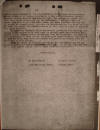
|
3. 5 August
1928.
Letter of Complaint from
F. Spinoza C.,
Leonardo Cajina, José Matamoros Jerez,
Eleazar Meza, Rama, to the Chief of the
Guardia Nacional, p. 3.
" . . . Various
fines imposed by the ex-Commandant of
Hacienda Jacobo Moreira actual Director
of Police Bluefields to Mr. Carlos
Morales, Nicasio Aguilar, Bibian Mendoza
and Eduardo Cano, can almost be proved
that they were never turned over to the
Government’s Office. This is worse than
what those that make guaro, and were
punished for it, and it should be
investigated, the same is recommended
for the other mentioned case, to indict
the administration of this city in a via
of progress and ample legality. ¶ ‘The
Guardia Nacional is an instrument placed
in the hands of the people of Nicaragua
to be well used or obstaclized’ says
General . R. Beadle in his communication
to General Jose Maria Moncada, and here
is the opportunity to make use of the
high view point on which the Guardia is
endowed to do away with the abuses and
punish the crimes that are mentioned in
this letter. ¶ From our part, as liberal
citizens, we come before you to put to
your orders our scarce abilities, to the
end that the law be no more hoaxed and
so help to keep order and prosperity. ¶
Respectfully, ¶ F. Espinoza C., Leonardo
Cajina, Jose Matamoros Jerez, Eleazar
Meza."
|
|
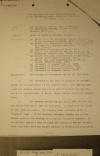
|
1. 6 August
1928.
Claim of Freiberg Mahogany Company,
Major H. H. Utley,
Puerto Cabezas, p. 1.
"References: (a)
Letter from The Honorable Nicholas
Longworth to the Secretary of State,
dated 13 June, 1928 ¶ (b) Letter from
Commanding General, Second Brigade, to
Commander, Eastern Area, dated 25 July,
1928 (WWS-s) ¶ (c) Statement of
Lieutenant Ranck, USMC. ¶ (d) Letter
from Lieutenant Colonel Englesing to
Commander, Eastern Area, dated 4 August,
1928. ¶ (e) Letter from Area
Quartermaster to Commander, Eastern
Area, dated 2 August, 1928. ¶ (f) Letter
from Area Quartermaster to Mr. T.
Mullen, dated 12 July, 1928. ¶ (g)
Statement of Sergeant Heller, USMC, ¶
(h) Statement of Private Shockley, USMC.
¶ (i) Statement of Corporal McCauley,
USMC. ¶ (j) Statement of Sergeant
Walter, USMC. ¶ Enclosures: (10) Copies
of references (a) to (j) inclusive. ¶ 1.
The undersigned has made as complete an
investigation as is practicable at the
present time. Both Captain Linscott and
Captain Walker are out on patrol against
the bandits and it is impracticable to
secure their statements at the present
time. ¶ 2. The bandits reached La Luz
April 12th and the Pis Pis mining area
April 15th of this year. At that time
the force in this area was small. The
logging camp – locally known as
‘Eugene’s Camp’ – of the Freiberg
Mahogany Company lay on the direct route
of the bandits from Pis Pis to Puerto
Cabezas. It is reliably reported that at
least one column of bandits started over
this trail with the avowed purpose of
raiding the properties . . . "
|
|
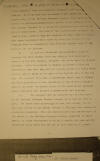
|
2. 6 August
1928.
Claim of Freiberg Mahogany Company,
Major H. H. Utley, Puerto Cabezas, p. 2.
" . . . of the
Standard Fruit and Steamship Company at
and near Puerto Cabezas. To do so they
must necessarily have passed through
logging camp of the Freiberg Mahogany
Company above referred t. As soon as
reinforcements arrived a patrol of one
platoon of the 60th Company (Captain N.
W. Linscott commanding) was sent to the
Pis Pis mining area. The bulk of this
patrol moved overland via Brown’s Camp,
Eugene’s Camp and Englesing’s Camp,
while a detachment under Lieutenant
Ranck moved by motor via Wausta and the
Cucalaya River to Englesing’s Camp with
the greater part of the supplies for the
platoon. ¶ 3. As soon as additional
transportation could be procured the
59th Company (less one platoon) was
moved out in support of the 60th
Company, following the route taken by
Captain Linscott. Until the arrival of
Captain Linscott’s column at Englesing’s
Camp said Camp and the logging
operations based thereon were open to
raids on the part of the bandits then in
the Pis Pis. His movement with that of
Lieutenant Ranck, was to effect
affording protection to the operations
of the Freiberg Mahogany Company, as
under the avowed policy of the bandits
all American owned industries were
subject to destruction and seizure. ¶ 4.
The charges that the Marines took all
the boats of the Freiberg Mahogany
Company, appear to be correct only in
part. The boats taken appear not to have
been seized, but to have been rented by
the senior officer on the spot when
needed as a military necessity. The Area
Quartermaster has settled some of the
claims of the Freiberg Mahogany Company
submitted by their agents, or those
represented to their agents, and has
pending additional bills which are not
yet in such shape as to permit . . . "
|
|

|
3. 6 August
1928.
Claim of Freiberg Mahogany Company,
Major H. H. Utley, Puerto Cabezas, p. 3.
" . . . their
payment. When, or if, these bills are
properly [section missing] they will, if
they are believed correct and just, be
paid [section missing] the Area
Quartermaster. If believed unjust they
will be returned with advice that the
claim be submitted to Washington for
settlement. ¶ 5. The statements
contained in the basic letter regarding
provisions, and especially [?] do not
appear to be in accordance with facts. ¶
HAROLD H. UTLEY . . . "
|
|
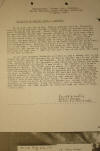
|
4. 6 August
1928.
Statement of Private David E. Shockley,
3 Aug., Claim of Freiberg Mahogany
Company, Major H. H. Utley, Puerto
Cabezas, p. 4.
" . . .
Headquarters, Eastern Area, Nicaragua. ¶
Marine Barracks, Puerto Cabezas,
Nicaragua. ¶ 3 August, 1928. ¶ STATEMENT
OF PRIVATE DAVID K. SHOCKLEY. ¶ On or
about the 9th of May, Captain Linscott
left Mr. Engleson’s camp for the La Luz
Mine leaving a reserve supply of rations
with Sergeant Whitmarsh and ten men.
About three days after Captain Linscott
was gone Captain Walker came through,
stopping at our camp overnight. He left
the next morning taking some of the
supplies that we had, saying that there
would be supplies up there on the 17th.
About three o’clock the same day an
Indian came in with a Marine prisoner
and a note from Captain Walker to send
him in to Puerto Cabezas the first
available transportation. One day, the
date I don’t remember, Mr. Mullen was in
our camp. He said that he was going up
the river to get some supplies he had
cached and bring them down the river
until the rumors that were out blew
over. That was the last I saw of him
until the night of the 17th in Wounta. ¶
On the 14th Sergeant Whitmarsh said that
he had a turkey bone in his throat and
that it was hurting him, he said he
thought that he had better come to
Puerto Cabezas to the hospital. So we
left the next morning the 15th, bringing
with us the prisoner, a sick music, and
one native for guide, Sergeant Whitmarsh
and myself, 5 men in all. The Sergeant
left Private Philips in charge. The
first night we camped on a sand bar, the
next night which was the 16th, we camped
in a banana patch, the next morning, the
17th arrived at Wounta. We had no
supplies and the Sergeant bought our
meal in Wounta. We were in Wounta all
that day and that night, leaving the
morning of the 18th. About 12 o’clock
the night of the 17th Mr. Mullen came in
at Wounta and we left the next morning
before he got up. I didn’t talk to him
while we were there. We met Mr. Behr in
Wounta and he hired a boat for me to go
to Puerto Cabezas in. We had three boats
belonging to Mr. Mullens. I had one
which I left in Wounta. It was in good
condition. Mr. Behr brought the other
two down the river to Wounta a week
later. ¶ DAVID E. SHOCKLEY, ¶ Private,
U.S. Marine Corps . . . "
|
|
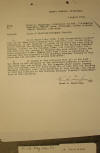
|
5. 6 August
1928.
Statement of Frank C. Englesing,
Lieutenant Colonel, U.S. Reserve, 4
Aug., Claim of Freiberg Mahogany
Company, Major H. H. Utley, Puerto
Cabezas, p. 5.
" . . . Puerto
Cabezas, Nicaragua. ¶ 4 August 1928. ¶
From: Frank C. Englesing, Lieutenant
Colonel, U.S. Reserve. ¶ To: Commander,
Eastern Area, Nicaragua, Marine
Barracks, Puerto Cabezas, Nicaragua. ¶
Subject: Claim of Freiberg Mahogany
Company. ¶ 1. On or about 9 May 1928, I
was accompanying a detachment of the
Wawa patrol. Captain H. D. Linscott,
U.S. Marine Corps, commanding, in the
capacity of guide. On or about the same
date we passed through the mahogany
cutting camp of the Freiberg Mahogany
Company, located on the Cucalaya River,
and remained there for a few hours for
the purpose of transporting pack animals
across the above mentioned river. During
this time I have no hesitancy in stating
that the property of the Freiberg
Mahogany Company at this place was not
molested in anyway whatsoever. ¶ 2. In
regard to the statement that all of the
lard was taken by men belonging to the
detachment referred to above, I can
state that men working for the Bragmans
Bluff Lumber Company took, by mistake,
one (1) forty pound tin of lard from the
Freiberg Mahogany Company’s boat. Upon
discovery of this mistake, the amount of
lard was returned to the Freiberg
Mahogany Company’s representative in
that district. ¶ Frank C. Englesing."
|
|

|
6 August 1928
(2332).
Radiogram from Major H. H. Utley, Puerto
Cabezas, to Gen. Feland, Managua.
|
|
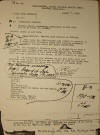
|
7 August
1928.
Brigade Field Message No. 27, Boats on
the Rio Coco, Major Oliver Floyd, by
direction of Gen. Feland,
Managua, to
Capt. Edson, en route to Poteca.
|
|
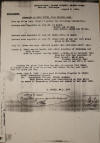
|
8 August
1928.
Memorandum on Strength on Coco River,
from Eastern Area,
Major O. Floyd,
Managua.
|
|

|
8 August 1928
(1640).
Radiogram from H. H. Utley, Puerto
Cabezas, to Gen. Feland, Managua.
|
|

|
8 August 1928
(2132).
Radiogram from H. H. Utley,
Puerto
Cabezas, to Gen. Feland, Managua.
|
|
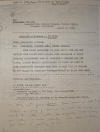
|
8 August 1928
(2133).
Radiogram from Gen. Feland, Managua, to
Major H. H. Utley, Puerto Cabezas.
|
|
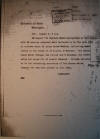
|
9 August
1928.
Telegram from US Minister C. Eberhardt,
Managua, to Secretary of State,
Washington D.C.
|
|

|
9 August 1928
(1902).
Radiogram from Major H. H. Utley, Puerto
Cabezas, to Gen. Feland, Managua.
|
|
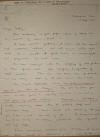
|
1. 10 August
1928.
Letter from Capt.
M. A. Edson, Mastaquas, to
Major H. H. Utley, Puerto Cabezas, p. 1.
"Major Utley:- ¶
Am enclosing a few papers, much of which
has a mark of some kind. ¶ H. Cook
arrived yesterday at 0900, but his
second boat, containing rations, did not
arrive until after dark. As a result, I
spent today in reorganization and
preparation for next move. ¶ Am now
organized into one company of two
platoons of three squads each, plus
company headquarters of eight enlisted.
There are 32 Denver men, 28 Galveston
men and one Navy – total of 61 Marines
and 1 USN. ¶ My biggest difficulty now
is sore feet. I have a request for shoes
in Cabezas. One pair of those per man in
the field is urgently needed as well as
240 pairs of socks, woolen. Malaria is
plentiful mostly recurring cases due to
lack of sleep and strenuous days. I have
about 200 rounds of 30 cal per man – and
300 rounds of .45. Arrangements will
have to be made to deliver additional
when requested but not before. ¶ From
messages received from Brigade, it would
seem that except for [Shechmore's]
patrol, none of the . . . "
|
|
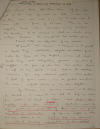
|
2. 10 August
1928.
Letter from Capt.
M. A. Edson, Mastaquas, to
Major H. H. Utley, Puerto Cabezas, p. 2.
" . . . patrol
indeed have left their base. If you will
look at the map, you will see that I
have as territory some 200 miles long by
50 miles wide to case with a force of 60
men. There are no supporting troops
within 100 miles in any direction. The
territory to be covered is that in which
it is certain Sandino has concentrated
his entire posse. ¶ I would like a
definition of my mission. ¶ At present
my mission, as assigned, is to proceed
to Santa Cruz, establishing outposts at
crucial points. With the force at my
disposal, I cannot reach Santa Cruz and
adequately garrison my line of supplies.
No force of less than one section should
be left at any point – and that is the
absolute minimum for any advanced
patrol. This section is full of good
trails, and to protect and hold the
river, outposts should be very close
together. ¶ If, however, my primary
mission is to destroy the bandits, it
seems to me best to keep my entire force
intact, at least to Poteca, and depend
upon mobility rather than outposts.
Mastawas controls the territory south
and southwest of here and will protect
our line of evacuation. If you can
supply me with food and clothing by air,
I believe that my command can make it
decidedly uncomfortable for the outlaws.
[Section missing] probably, but we hope
. . . "
|
|
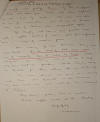
|
3. 10 August
1928.
Letter from Capt.
M. A. Edson, Mastaquas, to
Major H. H. Utley, Puerto Cabezas, p. 3.
" . . . the
results will justify them if this is
approved. I shall cut loose from boats,
and using captured criminals, move by
trail. The river will still be used for
evacuations, since it can be traversed
under cover of darkness with comparative
safety. ¶ Am moving up river tomorrow,
taking mules and boats. Due to lack of
boat crews some men of necessity have to
move by trail. Tell Brigade I am having
enough to do to keep my own boat in
operation without bringing some to
Quilali for their outings after we do
the work. ¶ The arms returned were found
in a nearby cache here. Some dynamite
was also discovered. The two bombs were
even made for our amusement at Gulke's.
¶ Map showing position there is
enclosed. ¶ Medical supplies received
all OK. Thank you. ¶ Respectfully, ¶
Merritt"
|
|

|
10 August
1928 (1635).
Radiogram from Gen. Feland,
Managua, to
Major H. H. Utley, Puerto Cabezas.
|
|

|
10 August
1928 (2013).
Radiogram from Gen. Feland, Managua, to
Major H. H. Utley, Puerto Cabezas.
|
|

|
11 August
1928 (1630).
Radiogram from Major H. H. Utley, Puerto
Cabezas, to Gen. Feland, Managua.
|
|
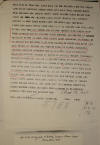
|
12 August
1928 (0830, 0840, 1809).
Radiograms from Capt.
M. A. Edson, Upper Coco
River, to Major H. H. Utley, Puerto
Cabezas.
|
|

|
12 August
1928.
General Intelligence Report,
1st Lt. W.
C. Hall, Puerto Cabezas (last pg. only).
"Reports from
HONDURAS indicate that the country as a
whole is anything but quiet; in fact the
situation seems to be getting worse. ¶
The ship on station, U.S.S. DENVER, left
August 11th, for the north coast of
HONDURAS, and that together with special
investigations, should throw more light
on this matter. Report will be made
later. ¶ 10. For some months past
reports from many sources have been
received reporting that arms and
supplies were being received at
CARATASCA LAGOON and probably being
shipped to NICARAGUA bandits via the
PATUCA River. ¶ In the light of recent
developments, the possibility that these
arms and supplies were consigned to
Honduran revolutionists, must be
considered. ¶ 11. Copy of a report from
COSTA RICA is attached marked ‘A’ for
information. ¶ W. C. HALL, ¶ 1st Lieut.,
U.S. Marine Corps, ¶ Area Intelligence
Officer."
|
|
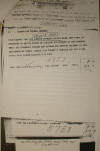
|
13 August
1928 (1404).
Radiogram from Major H. H. Utley, Puerto
Cabezas, to Gen. Feland, Managua.
|
|
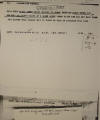
|
13 August
1928 (1930).
Radiogram from Major H. H. Utley, Puerto
Cabezas, to Gen. Feland, Managua.
|
|
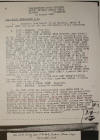
|
13 August
1928.
Air Patrol Memorandum #55, extracts,
Managua to Santa Cruz to Somotin
(no
author indicated).
"AIR PATROL
MEMORANDUM #55. ¶ 1. Extracts from
Report of Air Mission, dated 12 August
1928, are quoted for the information of
all concerned: ¶ 2. 0905 – MANAGUA: Took
off. ¶ 1015 – SANTA CRUZ: Normal. ¶ 1108
– FIVE MILES UP STREAM FROM SOMOTIN:
Capt. Edson’s patrol. Dropped mail and
shoes and made the following pick up:
‘TO CO EASTERN AREA 8612 TWO MEN,
EVIDENTLY BANDITS COMING DOWN RIVER
YESTERDAY TURNED NORTH INTO GOOD TRAIL
LEADING NORTH FROM SHILOMATE, ONE
DROPPED THIRTY EIGHT CALIBER RIFLE
BULLET, SOFT NOSED, DUM DUM. SHILOMATE
PLACE HOWARD CRASHED. TELL SGT MURPHY TO
BURN PLANE. HOWARD LEFT FOR BOCAY 1300
YESTERDAY. PROCEEDING BOCAY. EDSON
0830.’ ‘TO R-2 EASTERN AREA 8612 ABRAM
RIVERA FIVE FEET SIX INCHES – 175 LBS,
SHORT, SQUAT SPANIARD – NATIVE JINOTEGA,
RIVER MERCHANT AND BROTHER OF GUADALUPE
RIVERA, OF SANTA CRUZ – ACTIVE AGENT
MESSENGER AND RECRUITER OF SANDINO. NOT
BELIEVED TO BE WITH SANDINO ON UPPER
COCO RIVER. VERY GOOD FRIEND OF THOMPSON
AND WEBSTER BOCAY. IS ALWAYS THOROUGHLY
INFORMED SANDINO’S MOVEMENTS. HAS NO
MILITARY TITLE OR POSITION. GUADALUPE
BELIEVED COLONEL AT BATTLE OF QUILALAI.
PRESENT WHEREABOUTS UNKNOWN. INDICATIONS
LEAD ME TO BELIEVE FORCES OF SANDINO –
JIRON and ALTAMIRANO ARE CONCENTRATED IN
POTECA RIVER – ESPANOL GRANDE – POTECA
AREA. EDSON 0840.’ A patrol was
proceeding up the NORTH bank of river. ¶
1130 – FOUR MILES UP STREAM FROM CAPT
EDSON’S PATROL: Six men were seen to
hide in a shed. Area was bombed. A
direct hit was made on the shed. ¶ 1235
– GULKE’S LUMBER CAMP: Deserted. ¶ 1400
– MANAGUA: Landed at Airdrome. ¶ 3. The
COCO RIVER was reconnoitered from SANTA
CRUZ to SOMOTIN. Several suspicious
places were bombed and ground straffed.
Amount of damage is unknown. It is
probable that outlaws suffered at least
six casualties. Only one canoe was seen
between POTECA and Capt. Edson’s patrol.
This was hidden in a small creek about
two miles from the COCO, indicating that
outlaws are taking unusual precaution to
prevent being seen. Twelve canoes were
seen drawn up to the river bank at
various places between SANTA CRUZ and
GUIGUILI. Nearly all houses between
SANTA CRUZ and POTECA appeared to be
occupied. A total amount of 1,000 rounds
of machine gun ammunition and 19 bombs
were expended."
|
|
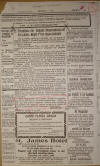
|
13 August
1928.
"El Presidente del Consejo Departmental
de Elecciones Mayor Price
Inspeccionando,"
La Información,
Bluefields, Aug. 16.
Goodbye to Captain
Kendall.
|
|
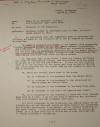
|
14 August
1928.
Estimate of the Situation,
Capt. H. D.
Linscott, Cuvali, to Major H. H. Utley,
Puerto Cabezas, p. 1.
|
|
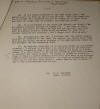
|
14 August
1928.
Estimate of the Situation,
Capt. H. D.
Linscott, Cuvali, to Major H. H. Utley,
Puerto Cabezas, p. 2.
|
|
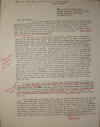
|
14 August
1928.
Letter from Major H. H. Utley, Puerto
Cabezas, to "My Dear Edson," p. 1.
|
|
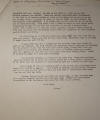
|
14 August
1928.
Letter from Major H. H. Utley,
Puerto
Cabezas, to "My Dear Edson," p. 2.
|
|
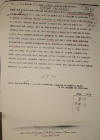
|
14 August
1928 (1930).
Radiogram from Major H. H. Utley,
Puerto
Cabezas, to Capt. Cook CO Bocay, Capt.
Edson CO Coco Patrol, and Gen. Feland,
Managua.
|
|
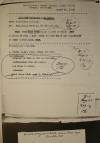
|
15 August
1928 (2012).
Radiogram from Gen. Feland, Managua, to
Major H. H. Utley, Puerto Cabezas.
|
|

|
16 August
1928.
G. I. Moreno,
"Laboremos por el
Resurgimiento de Bluefields,"
La
Información, Bluefields.
|
|

|
16 August
1928.
"Correspondencia de Rama,"
La
Información, Bluefields, p. 1.
|
|

|
16 August
1928.
"Correspondencia de Rama,"
La
Información, Bluefields, p. 2.
|
|
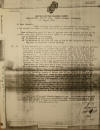
|
1. 16 August
1928.
Letter on Estimate of the Situation,
from Major H. H. Utley, Puerto Cabezas,
to Gen. Feland, Managua, p. 1.
"My dear General:-
¶ While awaiting the arrival of the
transport plane I will take a few
minutes to submit a brief outline of my
estimate of the situation. ¶ From
information available here it appears
that the bandits are all in the general
area about POTECA and there appear to be
three plans open to them. ¶ 1st To
withdraw into HONDURAS. ¶ 2ND To
withdraw up the POTECA. ¶ 3rd To
withdraw up the COCO and then up one of
the tributaries thereof to the east or
southeast towards GARRABO. ¶ Plan 1. If
they withdraw into HONDURAS they may
find a temporary refuge and possibly
allies and supplies in limited
quantities. They may be able to make a
raid later into NICARAGUA shortly before
the election and possibly have
sufficient success to give color to a
protest against the legality of the
election. It appears doubtful if they
will find even a temporary refuge at
present although there is a probability
that one of the parties in HONDURAS
would ally themselves to Sandino if the
revolution takes place there. They would
give us an opportunity to concentrate
our available force on or near the COCO
AND WANKS Rivers and prevent their
return. Such a move on their part would
lower their prestige and morale, which
must be already shaken by recent events.
¶ Plan 2. A withdrawal up the POTECA
leaves the future adoption of Plan 1
open and also leaves an avenue of escape
open to the leaders if all goes against
them. They have recently been based out
of this area and it is believed that
their supplies there have been
destroyed. They are getting nearer to
the 11th Regiment posts and within reach
of patrols from that organization. ¶
Plan 3. They keep the initiative in that
we must follow wherever they go. They
got away from the 11th Regiment. They
move into the area familiar to them
through which it is believed they have
cut some trails; and where they may have
packed some supplies. They may expect a
breathing spell while we organize our
position on the line of the COCO and
prepare to move after them. ¶ Plan 3
would be most disadvantageous to us. I
believe that they will adopt plan 3, but
there is a possibility that the lure of
a way out will cause the leaders to keep
as close as possible to the HONDURAN
border until forced with withdraw across
it . . . "
|
|
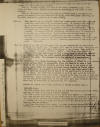
|
2. 16 August
1928.
Letter on Estimate of the Situation,
from Major H. H. Utley, Puerto Cabezas,
to Gen. Feland, Managua, p. 2.
" . . . Plan 1. To
carry out the original plan and occupy
the COCO to and including St. CRUZ,
retraining CUVALI. ¶ Plan 2. To hold
CUVALI, the line of the COCO to POTECA
(incl) and allow the Coco Patrol (Edson)
to operate at discretion on the trail of
the bandits. ¶ Plan 3. To hold the line
of the COCO to POTECA (incl), and
operate against the bandits from the
direction of BOCAY, from their rear
(direction of the COCO) and hold a
position at or near CUVALI. ¶ Plan 1.
This carries out my original orders but
these orders have been modified although
the modification may be revoked later.
It contains the bandits in an
unimportant area, and one not much
involved in the election. There is no
assurance that by passive action I can
effectually contain the bandits in this
area. It leaves the initiative to the
hands of the bandits. It leaves the
final objective, the elimination of
these bands to be done at a later time.
It jeopardizes the accomplishment of our
principal mission since it enables them
to make a sudden dash about the time of
the election and interfere with the
election. It leaves them unmolested in
an area too close to American properties
to the south and east. Rejected. ¶ Plan
2. Edson is my most active leader. His
men are experienced and can follow
wherever the bandits go. The supply will
have to be by air. This plan can be
undertaken with less delay than either
of the others. Even with the line CUVALI
– LA LUZ – PIS PIS – WASPUC – COCO River
from WASPUC to POTECA (both incl) held
there is left a large area in which the
bandits can operate and they may avoid
contact altogether, or outflank Edson
and move to the west. The movement is in
the nature of a penetration. ¶ Plan 3.
Operations from three directions, for
the outpost at CUVALI is to a certain
extent mobile, will, if successful,
force the bandits to make a last stand
in the mountains, disband, or drive them
on to our posts at the mining areas,
where out supply problems become simpler
as theirs become more difficult. A
successful attack by air after the three
patrols get within striking distance
should result in the annihilation or
disbanding of the bands. Any band that
succeeded in getting away could be
followed and prevented from doing much
harm. Success would mean the end of
organized resistance. Supply problems
are more difficult. Coordination is
difficult but not impossible especially
as the new radio sets were received
yesterday. There will be some delay in
inaugurating the movement. ¶ Subject to
orders from higher authority I decide to
adopt plan 3. ¶ The 60th Company will
hold the La LUZ and PIS PIS sectors and
occupy CUVALI prepared to move to the
north towards GARRABO. ¶ The 59th Co.
will hold the line of the WANKS from
WASPUC to MASTAWAS both incl. and
operate from BOCAY up the BOCAY River in
the direction of GARRABO. ¶ The Coco
Patrol (Denver and Galveston
Detachments) will hold the COCO from at
POTECA and operate against the bandits
from the direction of the COCO eastward
towards GARRABO. ¶ The Tulsa Detachment
will occupy a critical position between
MASTAWAS and POTECA or at the discretion
of the CO at BOCAY. (This detach is now
moving [section missing] . . . "
|
|
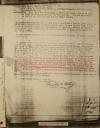
|
3. 16 August
1928.
Letter on Estimate of the Situation,
from Major H. H. Utley,
Puerto Cabezas,
to Gen. Feland, Managua, p. 3.
" . . . SUPPLY:
60th Co. via LA LUZ supplemented by air.
¶ 59th Co. via WASPUC and BOCAY. ¶ Coco
Patrol by water from WASPUC to POTECA,
thereafter off the country supplemented
by air. ¶ COMMUNICATION: Radio sets are
established at WASPUC and BOCAY. One is
en route to BOCAY to be sent forward to
the Coco Patrol. Two are en route to LA
LUZ one for that post and one for CUVALI
Patrol. ¶ If the bandits adopt Plan 1, I
will have to establish a line of posts
along the WANKS with a mobile force
centrally located ready to move against
them if they succeed in breaking through
in any numbers. It would be necessary to
retain a guard in the mining areas, but
the bulk of the 60th Co. would be
available for duty on the WANKS. ¶ If
the bandits adopt Plan 2, the COCO
Patrol will continue to advance directly
against them. ¶ It appears that we are
approaching one of the delays due to
lack of transportation which while I
anticipated, are nevertheless
heartbreaking. Since my recent visit to
WASPUC and BOCAY the supply situation
has considerably improved. We are,
however, still handicapped by two
factors: the lack of boats and the
disinclination of the indians to go into
the zone of operations. We can get
enough to operate all the boats we have
so far up to BOCAY but it is difficult
to get them to go further than that.
Impressment only seems to kill the goose
that laid the golden egg, as it means
that in the future the approach of
Marines is the signal for the abandoning
of the towns and houses. We have been at
some pains to establish a feeling of
confidence among the indians and hope
that the situation will improve. The
fact that Edson did not have any of his
Indians hurt was an important factor and
I took pains to broadcast that
information down the river as well as at
BOCAY. We have secured some additional
boats since my return here. We have lost
quite a number of boats in our
operations, more than we expected. ¶ The
loss of our other plane is a severe
handicap at present. I hope the
additional planes will not be delayed. ¶
With kindest personal regards, ¶ Very
respectfully, ¶ Harold K. Utley."
|
|


|
16 August
1928 (2203).
Radiogram from Gen. Feland, Managua, to
Major H. H. Utley, Puerto Cabezas (p. 1
only).
|
|
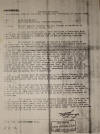
|
17 August
1928.
Report against Nicasio Vargas, former
commandante of civil police, El Bluff,
by
Capt. A. B. Sage, Bluefields.
"1. I have to
report that I have definite information
that during the incumbency of Nicasio
Vargas as commandante at El Bluff, Nic.,
that he accepted a retained fee of
$50.00 monthly from the Cuyamel Fruit
Company. ¶ 2. The amount in question is
one of a similar series of payments made
to various civil police officials
throughout the Area for protection of
the activities of the organization. ¶ 3.
It is believed that the purpose of the
fund is as follows, when a barge or
steamer of the fruit company is loading
at one of the places where there is a
police official he is expected to
prevent any interference with the
handling of the shipment and to give the
Cuyamel Fruit Company vessels the right
of way. This plan works in two ways, if
the civil police official should take it
upon himself to arrest the Captain or
Engineer of the steamer or barge for
some real or fancied violation of laws
this would mean that the vessel would be
unable to maintain the schedule. It is
believed that to prevent this last
occurrence that the fruit company
considers it best to pay in advance and
eliminate such a happening. ¶ 4. A
secret fund is maintained by the Fruit
Company for payments of this nature and
it is and would be impossible to prove
such payments but never the less they
are being made to the best of my belief.
¶ 5. Since the relief of Nicasio Vargas
as Commandante at El Bluff he has been
idle but it appears that he is well
connected with the officials at Managua
and an effort will probably be made to
appoint him to some government sinecure
shortly. This man is a cousin of Colonel
Vargas, who is or was an aide to the
President of Nicaragua. ¶ 6. Until such
time as the Guardia Nacional has taken
over all civil police activities in this
Area it is believed that it will be
difficult to obtain proof that will form
a basis of charges against persons such
as Nicasio Vargas as the business
concerns will not acknowledge or admit
that such payments are being made. This
is a natural feeling and difficult to
overcome. ¶ A. B. Sage."
|
|
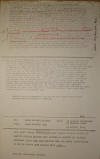
|
17 August
1928 (1933).
Radiogram from Gen. Feland, Managua, to
Major H. H. Utley, Puerto Cabezas.
|
|

|
17 August
1928 (1933).
Radiogram from Gen. Feland, Managua, to
Major H. H. Utley, Puerto Cabezas
(repeat of above - more legible version
of top section).
|
|

|
17 August
1928 (no time indicated).
Radiogram from Gen. Feland, Managua, to
Major H. H. Utley, Puerto Cabezas.
|
|
|
|
|
PREVIOUS
NEXT
|
|
|
|
|
|
|
|

